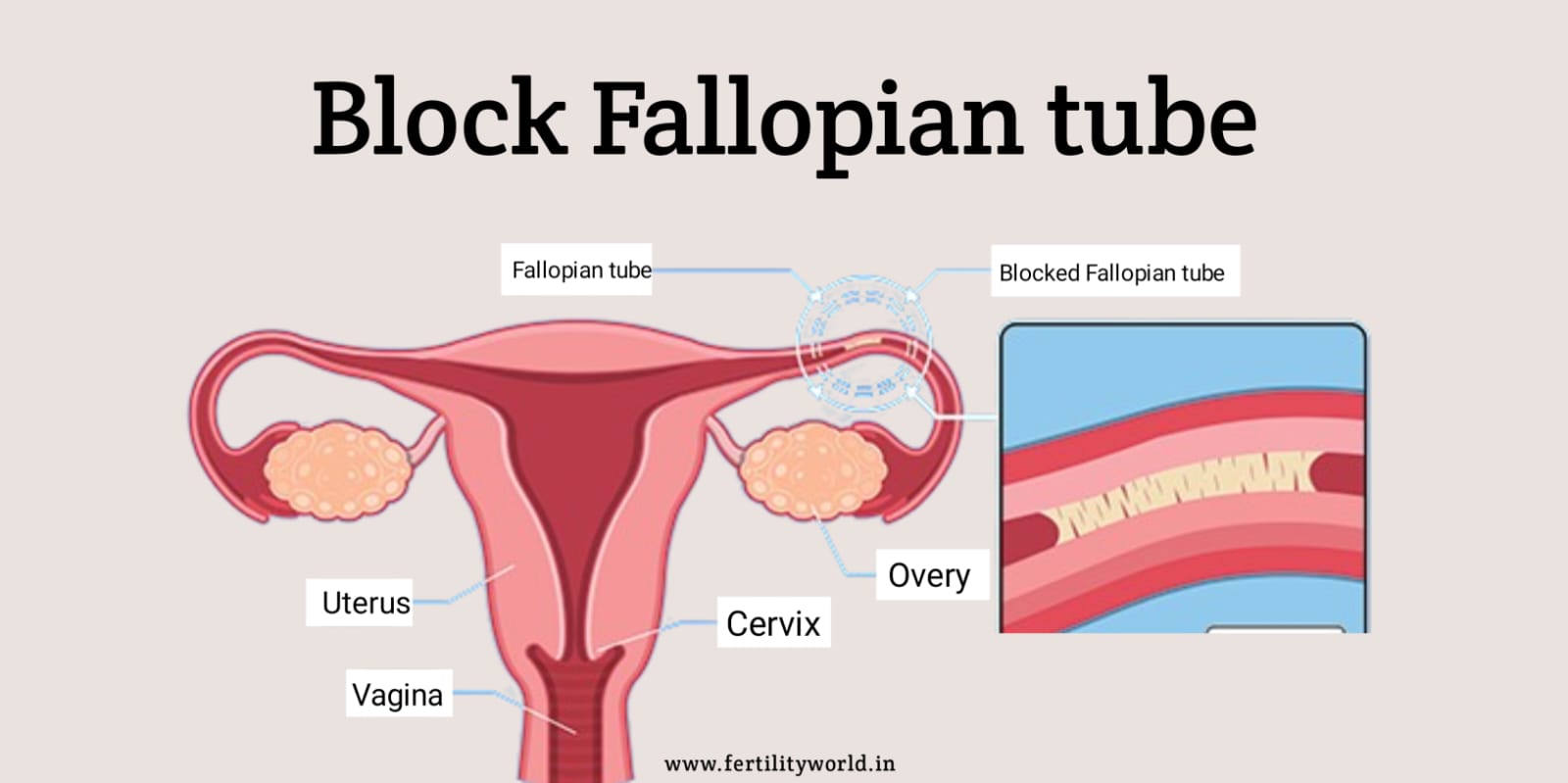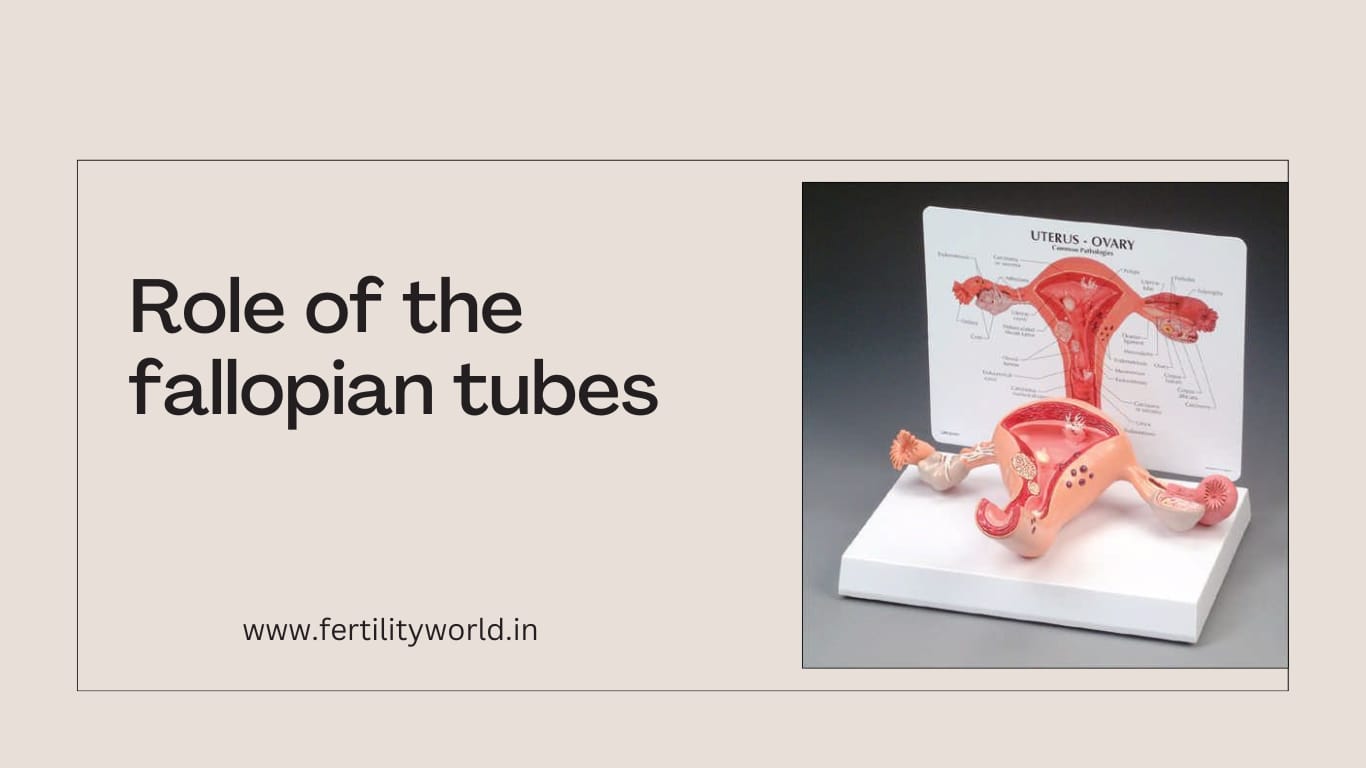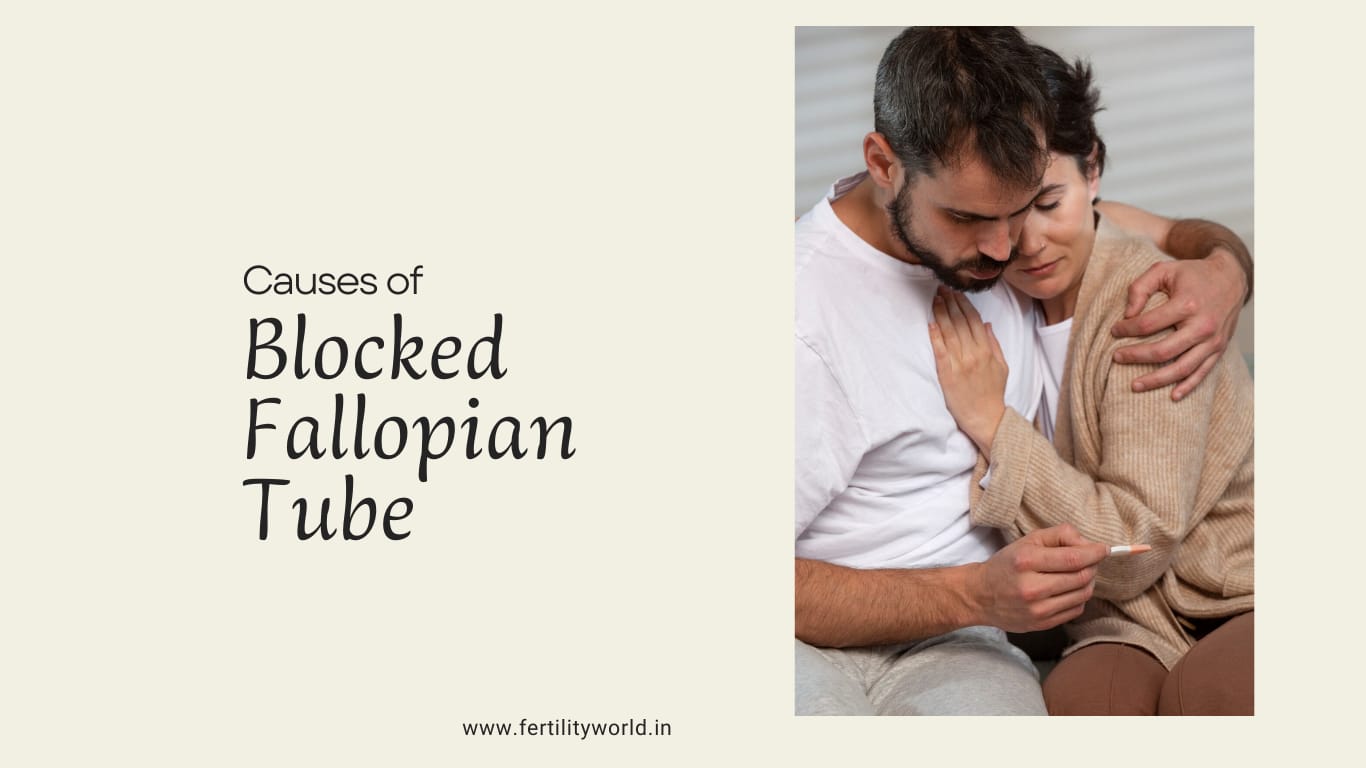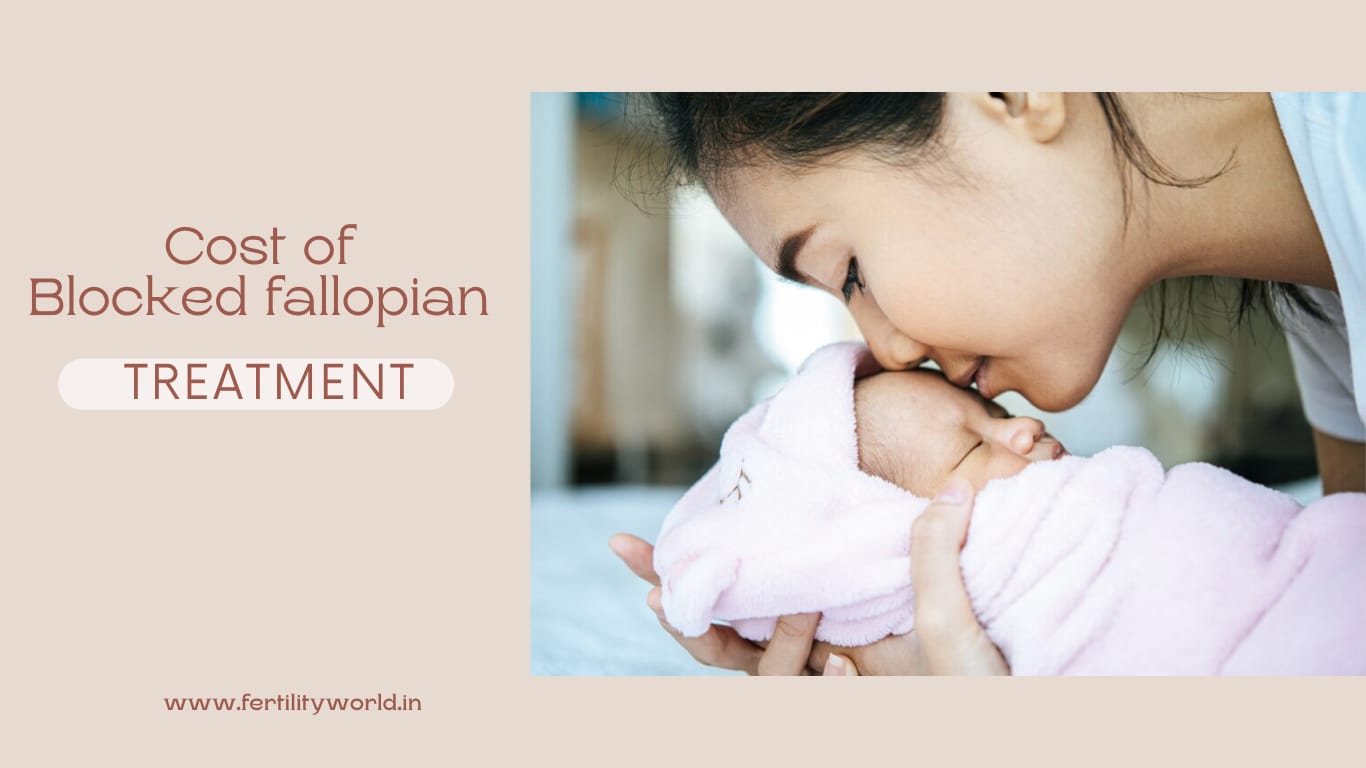Fallopian tube blockage is a common factor behind the failure of natural pregnancy and is treated with an advanced procedure. This block fallopian tube is effectively treated with assurance at a lower cost from Rs. 20,000 to Rs. 50,000 at the fertilityworld centre.
- Book an online appointment: Get a free consultation.
- Call\W:+91 9311850412 Email:info@fertilityworld.in
Roles of the fallopian tubes
The fallopian tubes are a reproductive organ in a woman’s body connecting the ovaries and the uterus. When a woman ovulates, her eggs travel from the ovaries into the fallopian tubes. Sperm travels from the vagina/cervix through the uterus to the fallopian tubes, where it joins with and fertilizes the egg. The fertilized egg (embryo) must travel from the fallopian tubes to the uterus for pregnancy.
Steps to getting pregnant with blocked fallopian tubes
In vitro fertilization (IVF) is the best option for getting pregnant with blocked fallopian tubes. IVF treatment bypasses the role of the fallopian tube in fertilization because the egg is retrieved and fertilized in the laboratory. The embryo is transferred and gets implanted in the uterus lining and initiates the IVF pregnancy like all-natural pregnant moms. Other steps include monitoring your ovulation cycles, seeking professional guidance, addressing the underlying health conditions, and changing your lifestyle for a better cause can give you a chance to get pregnant with a blocked fallopian tube. You can track ovulation with tools like ovulation prediction kits, cervical mucus monitoring, etc. Tracking fertility also allows you to time intercourse for the best results. You should look at your vaginal mucus each day and record the results on a chart. If the mucous is heavy and wet, you are ovulating. Before any decision, the best way is always to consult the experienced Doctors.
Symptoms of the blocked fallopian tube
A blocked fallopian tube is one common cause of female infertility. Damaged or blocked fallopian tubes can prevent a woman from getting pregnant by interfering with the movement of the sperm to the egg or the fertilized egg to the uterus. The indication of fallopian tube blockage arises from different symptoms including, difficulty conceiving (infertility), pain during sex, heavy/irregular painful periods, pelvic pain, ectopic pregnancy, and others. Early identification of blocked fallopian tube symptoms helps women seek medical attention at the right reproductive age. Difficult conceiving (Infertility): The sperm swim upward from the cervix, and uterus, to tubes and meet the egg for fertilization, the zygote travels down the uterus and undergoes division. If tubes are blocked, it becomes difficult for the sperm to reach the egg for fertilization. Also, women with tube blockage can have difficulty getting pregnant, even if they are ovulating regularly.
Pain during sex: During sex, the pressure accumulates in the tubes due to blockage causing pain in the pelvic area, lower abdomen, or on one side of the body. The pain can also be felt during ovulation due to a blocked fallopian tube.
Heavy/irregular painful periods: Menstruation travels from the fallopian tubes by transporting the ruptured eggs from the ovary to the uterus. If the tubes are partially/fully blocked, during periods, the smaller passage accumulates the pressure, causing irregular periods or heavy bleeding with pain.
Ectopic pregnancy: A blockage in a fallopian tube causes a fertilized egg to get stuck and implant outside of the uterus because the egg cannot reach the uterus due to a blocked fallopian tube. This is known as an ectopic pregnancy.
Other block fallopian tube symptoms: One can also experience other symptoms including, pelvic pain, nausea, vomiting, fever, chills, and difficulty passing urine or bowel movements. It can result in inflammation and swelling.
Causes of blocked fallopian tube
The following fertility factors usually cause a blocked fallopian tube:
- Pelvic inflammatory disease (PID): PID usually develops when sexually transmitted diseases (STDs) go untreated. Gonorrhea or chlamydia is the main causing agent. It causes inflammation near the fallopian tubes and leads to the development of scar tissue and blockages.
- Endometriosis: The growth of extra tissues outside the endometrium can cause a scar in the fallopian tube.
- Previous surgeries: Previous surgery or tubal ligation, especially on the fallopian tubes, can lead to pelvic adhesions that block the tubes.
- Fibroids: These are small growths within the uterus. They can compress the fallopian tubes, causing them to become blocked.
- Ectopic pregnancy: Ectopic pregnancies can damage/block the fallopian tubes, making it more difficult to become pregnant in the future.
Diagnosing of blocked fallopian tubes
The fertilityworld team used advanced diagnosis tools for blocked fallopian tubes. A hysterosalpingogram (HSG) test is used to diagnose tubal blockage and damage, in which a doctor fills the uterus with a dye solution that provides visual contrast, and then uses an X-ray to observe the uterus and the fallopian tubes. The treatment for tubal disease varies depending on the type of damage or blockage and the position. In some cases, surgery may be recommended to remove the blockage. However, surgery is not always beneficial. If the damage or blockage cannot be treated, then a woman may still be able to get pregnant through IVF.
Types of fallopian tube blockage
Blockages occur at three places in the fallopian tube and understanding their position is crucial before choosing a treatment option. If a single fallopian tube is blocked, it is a unilateral tubal blockage and if both tubes are blocked, it is a bilateral tubal blockage. Three types of fallopian tube blockage are:
- The blockage near the uterus is called proximal.
- The blockage in the middle of the fallopian tube is called Interstitial/medial.
- When the blockage occurs at the end of the tube near the fimbriae is called Distal.
Blocked Fallopian tube treatment
The fertilityworld’s best fertility team helps and guides hopeful parents through every step of the blocked fallopian tube treatment procedure. Before treatment, a specific type/position of fallopian tube blockage is mastered. X-rays or ultrasounds help our doctor find the exact position of the blockage. Only then treatment is recommended based on the position of the occurrence:
Conventional/tubal cannulation treatment: For proximal fallopian tube blockage, a conventional/tubal cannulation treatment is used to open them. Generally, a specialist inserts a catheter via the uterus into the blockage fallopian tube area. A special balloon is placed and inflated or use a thin wire to remove the blockage. Tubal cannulation has a high success rate, minimal risks, and downtime.
Laparoscopic/hysteroscopic surgery treatment: In the case of interstitial/medial type of fallopian tube blockage, laparoscopic/hysteroscopic surgery is performed. A small telescope is inserted through a small incision in the patient’s belly button and repairs the damaged/blocked tube via monitor guidance. These minimally invasive blocked Fallopian tube treatments usually take 24 hours. If the Fallopian tubes are significantly damaged/blocked, laparoscopy is used to remove them because it is a much more complicated issue, and scar tissue can easily grow and block the tube. Adhesions are cauterized and the tube is cut and then rejoined.
The distal type of blocked fallopian tubes is the hardest to treat because the blockage is adjacent to the delicate fimbria, a surgeon may not be able to remove adhesions without damaging the fimbria. Also, the area is harder to access and if adhesions re-grow, they can cover the ovary. Therefore, surgeons do not recommend surgery for this type of blockage because of the success rates and instead offer IVF treatment as the best alternative option to achieve the parenthood dream.
Tubal ligation reversal treatment: If patients have previously done tubal ligation and want to reverse again. A tubal ligation reversal is used. A surgeon surgically removes blockages from the fallopian tubes that were placed or added in previous ligation. parts of the fallopian tubes with the blockages are removed and the two ends of each tube are reconnected in a procedure called tubal reanastomosis.
Cost of blocked fallopian tube treatment
The fertilityworld is the top fertility centre in pan India that specializes in treating or opening blocked fallopian tubes through conventional- tubal cannulation, surgical (laparoscopic, hysteroscopic), and non-surgical treatment at a reasonable cost. The reasonable cost of blocked fallopian tube treatment ranges from Rs. 20,000 to Rs. 50,000 offered by the fertilityworld depending on the type of treatment and position of the blockages. For more cost information and free consultation, please take advice from the fertilityworld specialists.
Why choose the fertilityworld?
In pan India, the fertilityworld is rated as the best-certified fertility centre that has specialized in treating the blocked fallopian tube for more than 30 years. The centre has highly sophisticated and advanced instruments, it has the finest surgeon who executes laparoscopic surgery in repairing or removing the tube blockage, and the best consultant and gynecologist like Dr. Nidhi Sharma. The centre does not compromise on tube blockage treatment and cost. It offers the best treatment with transparent and flexible costs. It also offers free consultation.













22 thoughts on “BLOCKED FALLOPIAN TUBE”